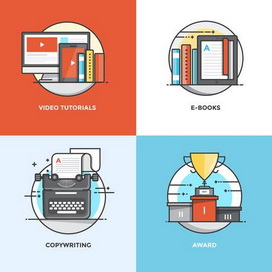Site menu
Section categories
| PORTABLE SOFTWARE |
| SOFTWARE |
| SARADADDY REPACK GAMES |
| PC GAMES |
| KIDS GAMES |
| VIDEO TUTORIALS |
| MOVIES |
| ANIMATED MOVIES |
| e-BOOKS |
| Hidden Object Games |
| Dash / Time Management |
| Casino Games |
| MAHJONG |
Statistics
Total online: 4
Guests: 4
Users: 0

PC Games List
Portable Software List
Kids Games List
VIDEO COURSES

TUTORIALS
1000+ e-BOOKS

1000+ MOVIES


Main » 2018 » April » 14 » HTML5 24-Hour Trainer
12:19:47 HTML5 24-Hour Trainer |
HTML5 24-Hour Trainer  Size : 14 Mb Authors : Joseph W. Lowery and Mark Fletcher Format : PDF Pages : 300 The HTML5 24-Hour Trainer is designed primarily to introduce the language to beginning web designers and, secondarily, as an aid to current designers who want to try out the new features of HTML5. Whether you’re a total newbie or a working professional who just needs a quick brush-up, this book will work for you. If you are just starting out as a web designer, I suggest you read the book straight through, cover to cover. Be sure to work your way through the Try It exercises as well, whether by following along with the written steps in the book or by watching the videos presented on the DVD with the print book, or watch online at www.wrox.com/go/html5video. The first series of exercises are intentionally very basic, and they ramp up as the book progresses. How This Book Is St ructured This book is designed as an easy on-ramp to the speedy highway of web design. As the book progresses, more and more complex topics are covered. Section I: Getting Started with HTML5 gives you a quick overview of HTML5 and discusses the various syntaxes available in the first lesson. Succeeding lessons cover the structure of an HTML page and how to create and view your pages. CSS (short for cascading style sheets) is the focus of Section II: Styling Your Web Page. CSS is an essential partner to HTML in web page design. The lessons in this section explain the fundamentals of CSS and show you how to check and validate your work. In Section III: Working with HTML Basics, two of the three lynchpins of web page design — text and links — are covered. The included lessons show you not only the code you’ll need to include text and create links, but also how to style them properly. The third key element in web page design, images, is a topic so big it takes all of Section IV: Incorporating Images to do it justice. In this section, you’ll learn the difference between foreground and background images and how to implement them both. You’ll also see how to work with image maps to add links to your graphics and how to include the graphical horizontal rule — a cool addition to HTML5. Section V: Using Lists provides all you need to know about the different kinds of lists available to web designers. In addition to the basics concerning unordered (bulleted) and ordered (numbered) lists, you’ll also learn some of the more advanced — but very common — uses for lists, including creating navigation bars. Although tables are no longer used for layout, they still are a necessary element for presenting data in an organized fashion. Section VI: Structuring Tables explains the basic ins and outs of the various elements and attributes that are needed to create a table on the Web. In addition, the lessons in this section take a look at styling a table to achieve a cleaner look-and-feel and reaching a broader audience with accessibility techniques. If your site tries to reach out to its visitors, you’ll need the information in Section VII: Building Forms. The first lesson in this section covers all the essentials of forms: their structure and key form controls, including textareas, radio buttons, checkboxes, and more. The next lesson shows you how to enhance your forms to make them really stand out with additional tags and CSS styling. Section VIII: Enhancing HTML with JavaScript takes a bit of a leap, but it’s a critical one for today’s web designer. You’ll learn JavaScript fundamentals as well as how to test and debug your scripts. More advanced topics, like working with a fully-formed JavaScript framework, are also covered. Websites that don’t incorporate video or audio in some form are getting harder and harder to find. In Section IX: Adding Media, you’ll see how to work in plug-ins in general to extend the capabilities of your browser. You’ll also learn specifics on adding audio players and video players to your sites— including the new HTML5 techniques for plug-in free control. The final section, Section X: Next Steps in HTML5, discusses how you can use HTML5 today with a focus on what does and doesn’t work across browsers at this point. The final two lessons dive deep into some of the more bleeding-edge features of HTML5, including structural tags, linked fonts, multiple-screen design, and interactive web graphics. Check links with this FILEFACTORY LINK CHECKER  If links are dead, please leave comment in the post.  http://www.filefactory.com/file/3runvhy30e0t/n/ |
|
|
| Total comments: 0 | |











